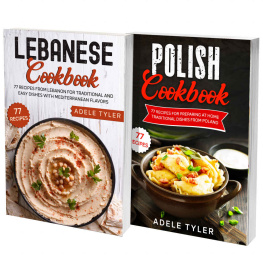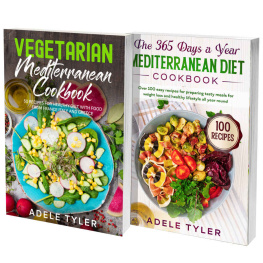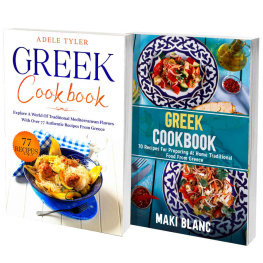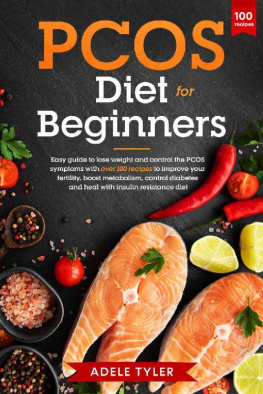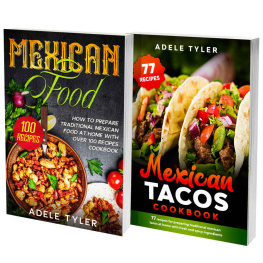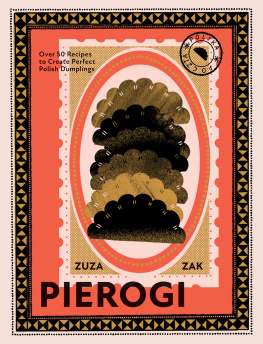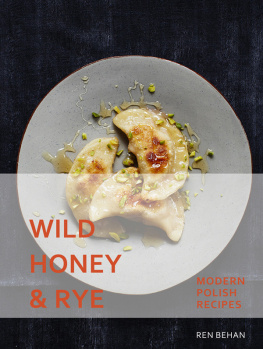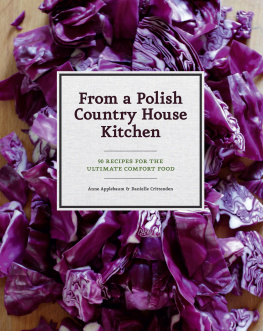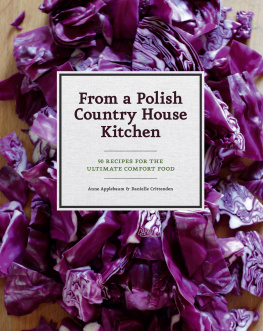Adele Tyler - Polish And Lebanese Cookbook: 2 Books In 1: Over 150 Recipes For Preparing At Home Traditional Food From Poland And Lebanon
Here you can read online Adele Tyler - Polish And Lebanese Cookbook: 2 Books In 1: Over 150 Recipes For Preparing At Home Traditional Food From Poland And Lebanon full text of the book (entire story) in english for free. Download pdf and epub, get meaning, cover and reviews about this ebook. year: 2021, genre: Home and family. Description of the work, (preface) as well as reviews are available. Best literature library LitArk.com created for fans of good reading and offers a wide selection of genres:
Romance novel
Science fiction
Adventure
Detective
Science
History
Home and family
Prose
Art
Politics
Computer
Non-fiction
Religion
Business
Children
Humor
Choose a favorite category and find really read worthwhile books. Enjoy immersion in the world of imagination, feel the emotions of the characters or learn something new for yourself, make an fascinating discovery.
- Book:Polish And Lebanese Cookbook: 2 Books In 1: Over 150 Recipes For Preparing At Home Traditional Food From Poland And Lebanon
- Author:
- Genre:
- Year:2021
- Rating:5 / 5
- Favourites:Add to favourites
- Your mark:
Polish And Lebanese Cookbook: 2 Books In 1: Over 150 Recipes For Preparing At Home Traditional Food From Poland And Lebanon: summary, description and annotation
We offer to read an annotation, description, summary or preface (depends on what the author of the book "Polish And Lebanese Cookbook: 2 Books In 1: Over 150 Recipes For Preparing At Home Traditional Food From Poland And Lebanon" wrote himself). If you haven't found the necessary information about the book — write in the comments, we will try to find it.
In the first book, PolishCookbook, you will discover 77 recipes for traditional Polish food.
Located in between the Central Europe and the Nordic Countries, Poland is land rich of history that lived in depth every major turnaround in the European scene across the centuries.
As it happens for every country with such history - another notable example would be Italy - also the culinary landscape is rich of contamination and in many Polish dishes is clear the touch given by one cuisine or another.
The Polish cuisine is rich and high in calories, similar to Nordic Countries and Russia, given the extreme temperature that can be reached during winter. Summer, though, is warm enough in a perfect Central European style, allowing to add into the menu several fresh dishes, vegetables and cucumbers.
The most famous dish is surely Pierogi, the Polish dumplings well known worldwide, but from chicken soups to cabbage rolls, pancakes and delicious cookies, the traditional recipes from Poland will not disappoint you.
In Polish Cookbook by Adele Tyler Blanc you will learn:
- 70 recipes for preparing at home tradition Polish recipes
- 70 recipes easy to make with ingredients that can be found in the local supermarkets
- History and traditions of polish cuisine
If you want to explore a new way of cooking coming directly from Europe, this cookbook is for you.
In the second book, LebaneseCookbook, you will find over 77 recipes for traditional Lebanese food.
Falafel. Hummus. Baklava. Arak. This short words are the very core of one of the most appreciated cuisine in the world: the Lebanese cuisine.
Lebanon is a small country in the middle-eastern area, with shores on the Mediterranean Sea, and its cooking tradition is rooted in the history of human kind. Roman, Greek, Persian, Arab and Byzantine culture heavily influenced the Lebanese food and traditions, making it a melting pot of different flavors and cooking methods.
The main ingredients are vegetables and grains, with a wide usage of spices, but a generally low consumption of meat, mostly in form of chicken and lamb. The traditional Lebanese table resembles the Spanish Tapas or Italian Aperitivo, with small dishes, often grilled, baked or lightly cooked in olive oil. Dishes like Hummus - a delicious sauce made with chickpea, tahini sauce and olive oil - and falafel are known worldwide and can be found everywhere from street food trucks to Michelin starred restaurants.
In Lebanese Cookbook by Adele Tyler you will learn:
- History of Lebanese cuisine
- How to cook 77 traditional Lebanese recipes
- Authentic recipes for Hummus, Falafel, Baklava and more
- Mediterranean recipes for spicy dishes and amazing flavors
If you like complex flavors and enjoy spicy and entertaining meals, this cookbook is for you.
Scroll up, click on buy it now and get your copy today!Adele Tyler: author's other books
Who wrote Polish And Lebanese Cookbook: 2 Books In 1: Over 150 Recipes For Preparing At Home Traditional Food From Poland And Lebanon? Find out the surname, the name of the author of the book and a list of all author's works by series.

